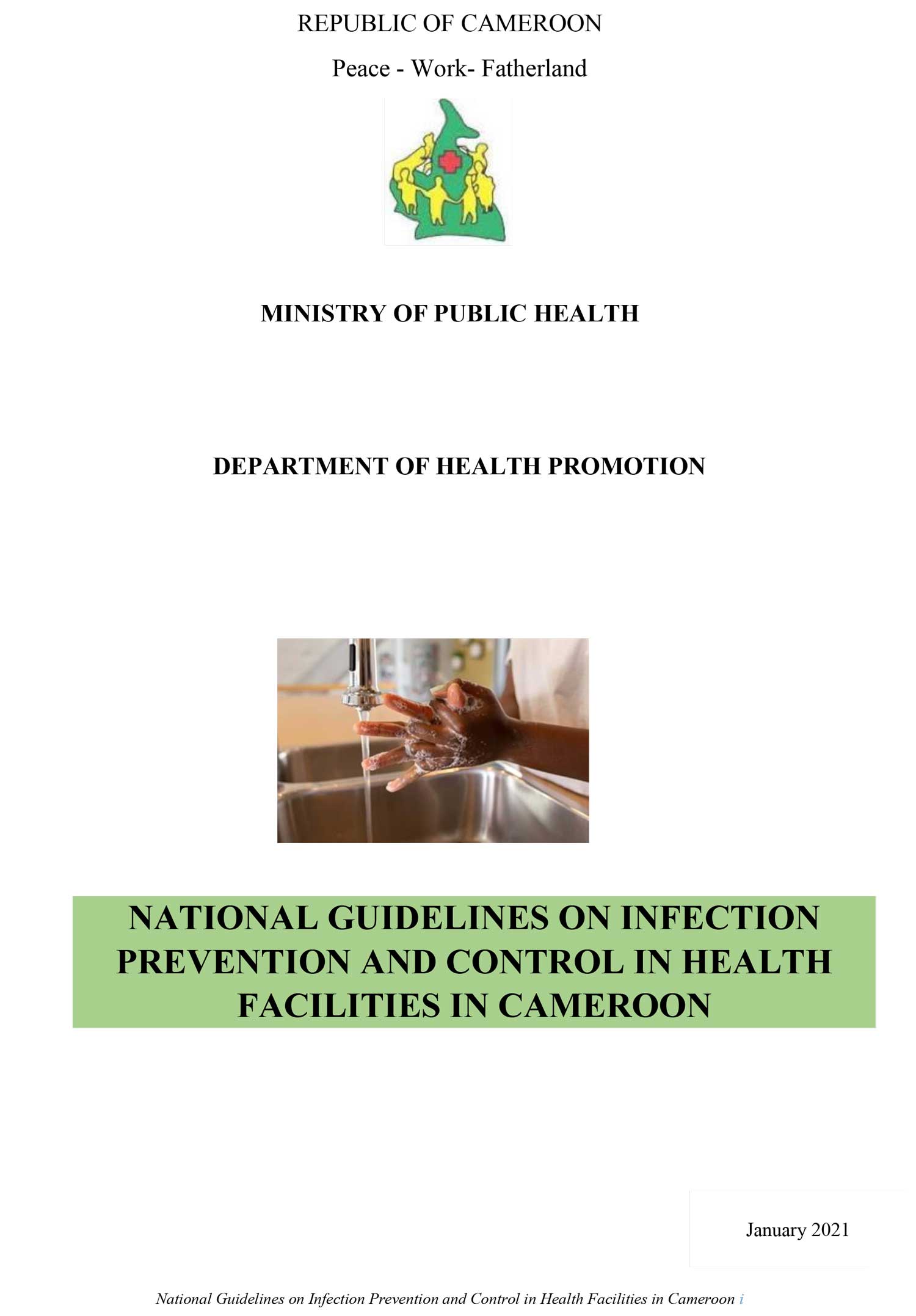- Version
- Télécharger 143
- Taille du fichier 5 Mo
- Nombre de fichiers 1
- Date de création février 14, 2022
- Dernière mise à jour mars 4, 2024
National guidelines on infection prevention and control in health facilities in Cameroon
Healthcare-associated infections (HAIs) are common all over the world, regardless of their development level, and may affect patients, health personnel and visitors. According to WHO, at any given time, 7% of the patients in developed countries and 10% in developing countries will contract at least one healthcare-associated infection [1]. Broadly speaking, a healthcare-associated infection (HAI) comprises all infectious events more or less closely connected with a process, a structure, a care practice, HAIs concern the patients, whether they are sick or not, but also health professionals and visitors. HAIs include any hospital-associated infection contracted in a health structure, and equally covers all care provided out of health facilities (HFs).
HAIs may originate from the population of a health facility (HF), may be connected to the use of medical devices or procedures or may result from the transmission of infections contracted in the community to patients in the HF. A HF may act as an amplifier in some instances, causing the infections to spread within the health facility and beyond the community at large. HAIs may cause serious diseases, prolong the stay in the hospital, deplete healthcare resources and lead to death. An established culture of safe healthcare practices as well as preparedness to outbreaks may help in preventing and controlling the spread of infectious agents, and are essential in containing the spread of antimicrobial resistance (AMR). Moreover, the International Health Regulations (IHR) henceforth require countries to set up measures facilitating the early detection and containment of events likely to become public health emergencies of international concern. Health facilities are spearheading activities pertaining to the detection and control of diseases. Surveillance in the hospital environment through public health surveillance systems is essential to enable an early public health response to infectious threats. Setting up an Infection Prevention and Control (IPC) programme in a health facility is key not only in preventing HAIs but also in preparing and responding to communicable diseases outbreaks. A set of core elements has been defined to help plan, organise and implement an IPC programme. These core elements and their components should be implemented in line with the IPC programme priorities and available resources adapted to the national level and health facilities.
Infection Prevention and Control (IPC): this refers to event-based practices and methods likely to prevent or reduce the transmission risk of microorganisms to healthcare providers, other patients, hospitalized patients and visitors, if they are evenly applied in healthcare structures. (16) Cameroon, like other countries is faced with the issue of healthcare-associated infections. The report of the Joint External Evaluation (JEE) of IHR capacities in Cameroon conducted in September 2017 brought to light shortcomings in the four technical components of antimicrobial resistance (AMR), including IPC. To fill the gaps identified during the JEE, a national action plan 2 to fight against antimicrobial resistance was developed and validated in July 2018 in Cameroon. This plan provided for the development of an IPC plan for the year 2019. A survey was carried out in this line in some health facilities of the four regions (North, Centre, West and Littoral) in 2019. This evaluation revealed shortcomings in IPC implementation.
To address these shortcomings, Cameroon commits to develop a “National Guidelines on Infection Prevention and Control in Health Facilities” to be put at the disposal of stakeholders namely, health professionals, support staff and administrative officials, with the contribution of technical and financial partners (WHO, USAID-MTaPS). The main goal of this document is to improve the quality of care in health facilities through protecting health personnel, patients and visitors.




